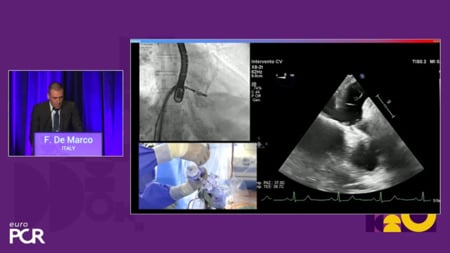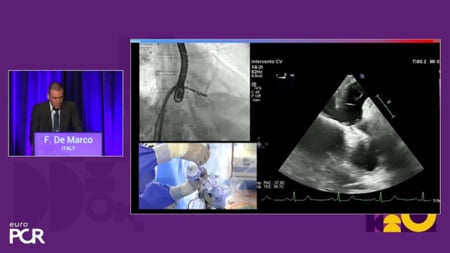Evolution and prognostic impact of cardiac damage after aortic valve replacement
Selected in JACC by E. Asher
The aim of the current study was to describe and characterize the natural evolution of cardiac damage post-AVR and its outcomes.
References
Authors
Philippe Généreux, Philippe Pibarot, Björn Redfors, Jeroen J. Bax, Yanglu Zhao, Raj R. Makkar, Samir Kapadia, Vinod H. Thourani, Michael J. Mack, Tamim M. Nazif, Brian R. Lindman, Vasilis Babaliaros, Flavien Vincent, Mark Russo, James M. McCabe, Linda D. Gillam, Maria C. Alu, Rebecca T. Hahn, John G. Webb, Martin B. Leon, and David J. Cohen
Reference
J Am Coll Cardiol. May 16, 2022. Epublished DOI: 10.1016/j.jacc.2022.05.006
Published
16 May 2022
Link
Read the abstract
Reviewer
My Comment
Why this study – the rationale/objective?
While the prognostic importance of extra-valvular cardiac damage prior to aortic valve replacement (AVR) is well-established, the impact of AVR on progression or regression of cardiac damage and its association with prognosis are unknown. The aim of the current study was to describe and characterize the natural evolution of cardiac damage post-AVR and its outcomes.
How was it executed? - the methodology
Patients with severe aortic stenosis (AS) across the surgical risk spectrum who underwent either transcatheter aortic valve replacement (TAVR) or surgical aortic valve replacement (SAVR) as part of the PARTNER 2A (N = 1,910), PARTNER 2B (N = 543), and PARTNER 3 trials (N = 948) were pooled and classified according to the extent of cardiac damage detected by echocardiography (echo) prior to AVR and at 1-year post-AVR.
Definitions: at both baseline and 1-year follow-up, patients were categorized into 5 stages, depending on the presence or absence of extra-valvular cardiac damage as detected by echo:
Stage 0 – no damage
Stage 1 – left ventricular damage
Stage 2 – left atrial or mitral valve damage
Stage 3 – pulmonary vasculature or tricuspid valve damage
Stage 4 – right ventricular damage
All patients underwent echo at baseline and 1-year follow-up. In addition, all patients underwent clinical follow-up at 1 month, 6 months, 12 months, and 24 months after AVR, and all adverse events were adjudicated by an independent committee, blinded to treatment assignment.
The association between baseline cardiac damage stage and 2-year outcomes (death, cardiovascular death, death or heart failure hospitalization, and death, heart failure hospitalization, or stroke) was assessed by means of multivariable Cox proportional hazards analysis with stratification by study and treatment assignment.
What is the main result?
- Among 3,401 pooled patients, 1,974 patients had evaluable cardiac damage staging by echo assessment at baseline (prior to AVR). Of these, 794 (40.2 %) underwent SAVR, and 1,180 (59.8 %) underwent TAVR.
- At baseline, 121 (6.1 %) were in Stage 0 (no cardiac damage), 287 (14.5 %) were in Stage 1 (LV damage), 1,014 (51.4 %) were in Stage 2 (LA or mitral valve damage), 412 (20.9 %) were in Stage 3 (pulmonary vasculature or tricuspid valve damage), and 140 (7.1 %) were in Stage 4 (RV damage).
- Patients with more advanced stages were older and more often male, had higher STS scores, were more likely to have diabetes, previous myocardial infarction, prior CABG, and COPD, were more likely to be frail and presented more often in NYHA class III-IV.
- Among the entire population, estimated 2-year mortality was 2.5 % in for patients who were in Stage 0 at baseline, 7.1 % in Stage 1, 14.6 % in Stage 2, 28.2 % in Stage 3, and 28.2 % in Stage 4 (overall P log-rank < 0.0001).
- In multivariable analysis, the extent of cardiac damage at baseline was independently associated with increased mortality 2 years after AVR (hazard ratio [HR], 1.51 per each increment in stage; 95 % confidence interval [CI], 1.32–1.72; P < 0.0001.
- Compared with pre-AVR, 15.6 % of patients improved at least 1 stage at 1-year follow-up, 57.9 % remained in the same stage, and 26.5 % deteriorated at least 1 stage.
- Stage of cardiac damage at 1-year follow-up remained a strong independent predictor of 2-year mortality (HR, 1.67 per stage; 95 % CI 1.18-2.35; P = 0.004) and the composite of mortality or rehospitalization for heart failure (HR, 1.93 per stage; 95% CI 1.54-2.42; P < 0.0001), even after adjusting for baseline stage of cardiac damage.
- In the overall population, after adjusting for baseline factors (including cardiac damage stage) and type of AVR, the change in cardiac damage stage between baseline and 1-year after AVR was independently associated with both all-cause mortality (p = 0.023) and the composite of death or heart failure hospitalization (p < 0.001).
- Independent predictors of stage deterioration included the presence of hypertension (OR, 1.73; 95 % CI, 1.01-2.96; P = 0.044) and index procedure performed with SAVR (OR, 2.04; 95 % CI, 1.52-2.74; P < 0.0001) compared with TAVR.
Critical reading and the relevance for clinical practice
The current study demonstrates the following:
- a high proportion of patients have some degree of extravalvular cardiac damage both before and 1 year after AVR;
- the extent of cardiac damage at baseline and at 1-year post-AVR are strongly associated with an increase in mortality and adverse events at 2 years post-AVR;
- compared with baseline, most patients demonstrated either no change (~ 60 %) or deterioration (~ 25 %) in cardiac damage stage 1 year after AVR;
- and change in cardiac damage stage 1-year after AVR was associated with 2-year prognosis, independent of baseline characteristics and baseline cardiac damage stage.
The investigator found a surprisingly high number of cardiac damage components that remained abnormal or even worsened after AVR. Hence, they suggest that patients whose cardiac damage stage fails to improve after AVR should be investigated for other concomitant diseases (i.e., amyloidosis, CAD, hypertension, other valve diseases, or dysrhythmia).
Most importantly, the findings might change the paradigm of treating aortic stenosis. Current guidelines recommend waiting for the onset of symptoms prior to consideration of AVR for patients with severe AS. Since few patients demonstrate regression of cardiac damage after AVR, however, intervention before the AS reaches a severe and symptomatic state could potentially limit the extent of cardiac damage, thus leading to improved long-term outcomes after AVR.
Should common practice and guidelines be changed?
The study has several limitations:
- longer follow-up might have allowed a better characterization of the beneficial impact of AVR on the evolution of cardiac damage.
- Second, the current cohort included only patients with severe symptomatic AS with very advanced disease, hence, cardiac damage could have been established with no potential for reversibility.
- Third, detailed assessment of medical therapy was not available.
- Lastly, additional imaging such as cardiac magnetic resonance imaging or Technetium pyrophosphate scan could have helped clarify the origin of cardiac anomaly.
The authors concluded that in patients undergoing AVR for severe AS, the extent of extra-valvular cardiac damage at baseline and its change at 1-year have important prognostic implications after AVR and suggest that earlier detection of AS and intervention prior to the development of irreversible cardiac damage may improve cardiac function and prognosis of patients with AS.
What is your approach regarding patients with severe AS? Do you think early intervention in severe AS patients, even before symptoms, might improve long-term prognosis?








No comments yet!